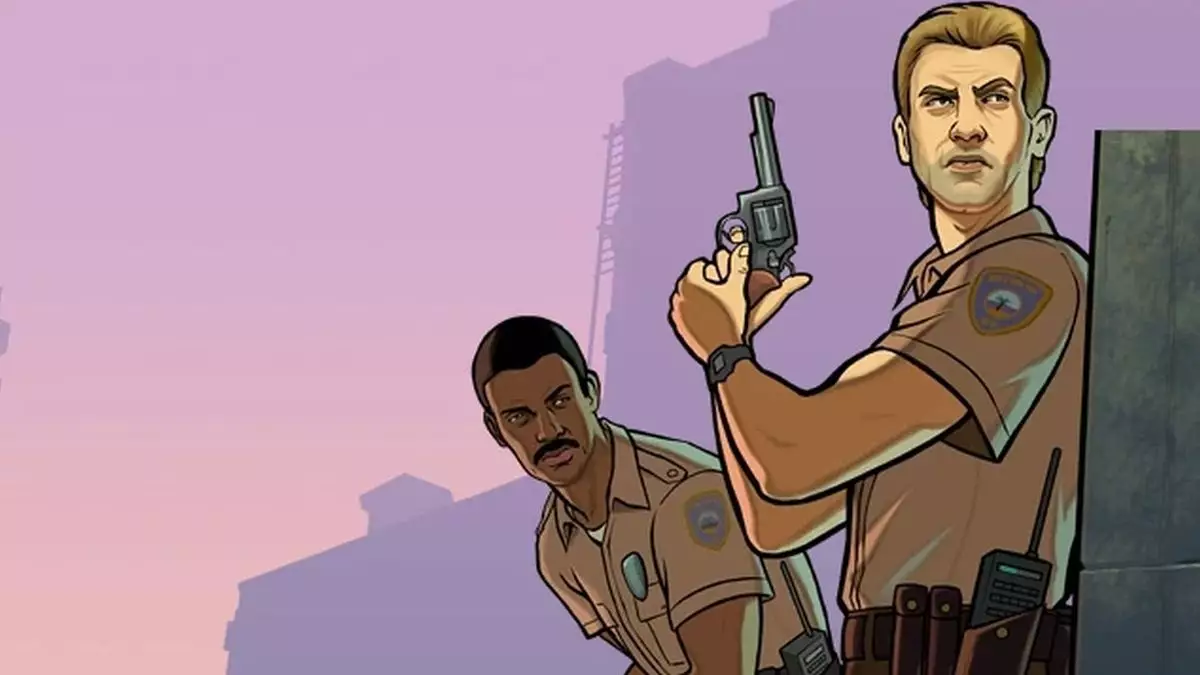In the adrenaline-fueled world of speedrunning, where milliseconds can mean the difference between glory and disappointment, unexpected glitches can derail even the most meticulously planned attempts. This was recently exemplified in a dramatic turn of events involving Joshimuz, a prominent speedrunner, during a 100-minute ‘No Major Glitches’ (NMG) run of the beloved game Grand Theft Auto: Vice City. As he approached a key mission involving the Cherry Popper ice cream factory, Joshimuz encountered an unexpected adversary: a police officer whose actions seemed to defy the laws of both logic and physics. Instead of the typical slow pursuit that might be expected with only a one-star wanted level, the officer exhibited what can only be described as superhuman speed, swiftly apprehending Joshimuz and thus ruining his run.
Towards the end of the clip shared by Joshimuz, frustration was evident as he lamented coming face-to-face with an “old speedrunning legend,” a phrase that evokes a sense of nostalgia and irony in this context. For speedrunners, moments where the game behaves unpredictably, particularly due to AI quirks, can resonate deeply, often becoming stories shared within the community. Yet in this instance, the rather overzealous police officer was not a mere figment of Joshimuz’s imagination but a glitch born from the game’s underlying code.
In the aftermath of Joshimuz’s incident, Obbe Vermeij, a veteran developer at Rockstar, stepped into the limelight to shed some light on this peculiar occurrence. He provided an insightful breakdown of the mechanics at play, explaining that the glitch was rooted in the artificial intelligence responsible for NPC behavior when it comes to entering vehicles. According to Vermeij, the AI experiences a sort of cognitive dissonance in this situation; it attempts to approach the car but fails to compute viable options for accessing the door.
The result of this miscalculation is what Vermeij referred to as “panic code,” causing the cop to warp—a term that carries a heavy connotation in the speedrunning community, where glitches can drastically alter the course of gameplay. Vermeij noted that the navigation system for NPCs was inherently complex, tasked with considering a multitude of factors like nearby obstacles, the state of the car—whether doors are open or closed—and the actions of other characters on the map. To the average player, these intricacies might go unnoticed, but for those who delve deep into the mechanics, they can spell disaster during a run.
The intersection of speedrunning and game glitches speaks to a unique aspect of gaming culture. While glitches can be detrimental, they also contribute to a narrative woven throughout a game’s lifespan—stories that are told and retold within communities. The incident involving Joshimuz and the glitching officer serves as both a cautionary tale and a badge of honor for speedrunners, who must always anticipate the unpredictable nature of the games they love.
Moreover, this scenario serves to highlight the need for balance in game design. On one hand, the spontaneity of glitches can add excitement, creating memorable moments that are recounted by enthusiastic players. On the other hand, poor AI behavior can lead to unforeseen and frustrating outcomes, reminding developers like Vermeij of the challenges they face in creating a refined experience.
In an era where gaming and streaming exhibit an unbreakable bond, the connection within the speedrunning community becomes ever more evident. Joshimuz’s experience resonated with fellow gamers who understood the stakes involved. The speedrunning community is not just a gathering of highly skilled players; it’s a collective of individuals who can empathize with each other’s struggles, victories, and moments of humor that arise from the chaos of glitches.
Despite the setback, the focus remains on camaraderie and resilience, embodying the spirit of speedrunning. The story of Joshimuz will likely join the annals of speedrunning folklore, a testament to both the challenges and the camaraderie that define this passionate community. As developers continue to grapple with technological glitches and AI challenges, speedrunners will undoubtedly keep pushing boundaries—embracing both the triumphs and the quirks that come along for the ride. In the world of Vice City, where chaos reigns supreme, the journey is as important as the destination.


Leave a Reply